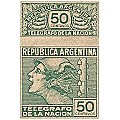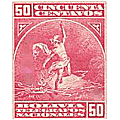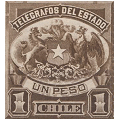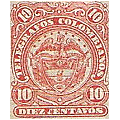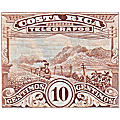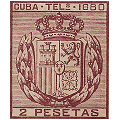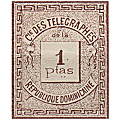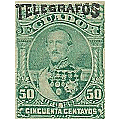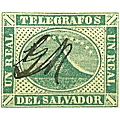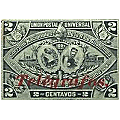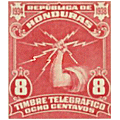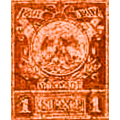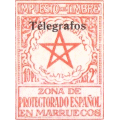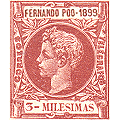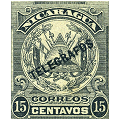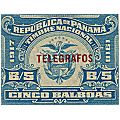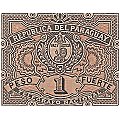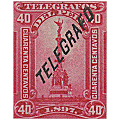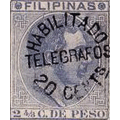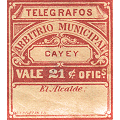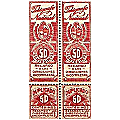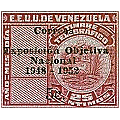| अनुवाद |
Übersetzen sie |
WORKING
|
Traduisez |
ترجم |
| перевести |
Traduca |
Traduzca |
翻译 |
|
Telegraph stamps of the World
Click here for a site-map. |
Select currency. Default = GBP (1.0)
|
I have brought these prices up to date and added currency selection.
CheckList Setup |
URUGUAY.
|
Steve Hiscocks wrote:
No background information on these stamps has been found. It seems probable that,
like a number of the earlier British Empire stamps and the Argentinian issues of
three years later, they were designed to be separated such that part remained on
the receipt and part of the message section of the form.
My note:
These were actually used as a surcharge for incomplete addresses.
In use, these had to be presented with the bottom part still attached.
Used top parts are cancelled with the National Telegraph dater postmark.
I have not seen used bottom parts.
|
According to Gustavo Coll, The first submarine cable in South America was laid between Argentina and Uruguay in October 1866 by the River Plate Telegraph Co.:
Montevideo, Santa Lucia, San José, Rosario, Colonia by landline a distance of 132 miles.
Colonia, Uruguay to Punta Lara, Argentina by submarine cable, a distance of 26 miles.
Punta Lara to Buenos Aires going west a distance of 36 miles, for a total of 194 miles.
The cable was made and laid by W.T. Henley's Telegraph Works Co.
It was abandoned in 1970.
According to Atlantic-Cable.com another cable was laid across the River Plate in 1873 between Montevideo and Punta Lara near Buenos Aires for the River Plate Telegraph Company.
According to Bill Glover, the Companhia Telegrafica Platino-Brasilera was set up in Brazil in 1874 to lay a cable from Rio de Janeiro to Chuy, Uruguay with the Western and Brazilian Telegraph Company (W&B) operating the service. The 1026 nm cable was manufactured by Siemens Brothers who also undertook the installation.
At Chuy, a cable laid by W.T. Henley using CS Mazeppa ran to Montevideo and was owned by the Montevideo and Brazilian Telegraph Company. From Montevideo a landline followed the River Plate for about sixty miles and then crossed into Argentina via the cable laid by W.T. Henley in 1866. In 1873 the IRGP laid a cable from Montevideo to Punta Lara, Argentina, and this was later diverted to replace the landline. These cables were owned by the River Plate Telegraph Company and this company which was later taken over by W&B. Connections to the West Coast of America Telegraph Company were made via the landlines of the Pacific and Europe Telegraph Company.
There were additional cables laid in 1920 by All America Cables, Inc. from Brazil to Argentina via Uruguay: The two main cables, from Atalaya to Rio de Janeiro (1270 nm.) and Montevideo to Santos (1068 nm.), were manufactured by Telcon and laid by CS Colonia.
Three cables across the River Plate, from Atalaya, Argentina to Montevideo, Uruguay, also manufactured by Telcon, were laid using Caceres, a vessel chartered locally and manned by men from CS Colonia.
A telegram of 1931 of Compañía Telegráfico-Telefónica Del Plata advertised "Use la TT para sus Telegrammas entre Montevideo, Buenos Aires, Rosario, Santa Fe, Cables a Brasil, Europa, Norte América, etc. Radios a los Vapores en viaje". Of these, only Montevideo is in Uruguay.
The telegrams that I have are from Montevideo to cities on the southern coast of Uruguay - Nueva Palmira, Colonia(del Sacremento) and Punta del Este.
The 1866 Telegraph route and first phonecall are all places on the railway line. It seems reasonable that this was deliberate policy, as in Argentina. I have therefore marked the railway system and labelled the Cities on it. However Nueva Palmira in the south-west, for which I have a 1951 telegram, is not on the rail network.
A list of 1906 for wireless-Telegraph stations lists only Montevideo as having a Telefunken Station with a range of 200km owned by the 'Society for W. T.' (World Trade ?).
A similar list for 1910 shows an additional Installation at Punta del Este, both now listed as Commercial with a range of 250 miles.
A detailed map (14.8MB) of 1914 showing Submarine cables, Telegraph routes and railways for Argentina and Chile can be found at Wiki Commons.
This is here to get consistent results on different browsers. |
|
Antel of Uruguay, give a timeline of telecommunications in Uruguay, they don't count anything before the telephone apparently, but goes up to 2014 :
|
| 1878 |
(February 16) - The first telephone call was made over networks of the "Brazilian Platinum Telegraph Company" between Montevideo and Canelones to the north. |
| 1888 |
The "Compañía Telefónica de Montevideo Ltda." (Commonly known as "Montelco"), acquires the rights and facilities of the Company Río de la Plata and the Telephone Company La Uruguaya, operating in Montevideo in competition with the "Sociedad Cooperativa" National Telephone ". |
| 1889 |
(1st November) the first telephone communication between Montevideo and Buenos Aires was made, using the lines of the "Compañía Telegráfico-Telefónica del Plata". |
| 1896 |
A decree established the superintendence of the General Post and Telegraph Office on the networks, thus creating the first state telecommunications network. |
| 1915 |
The General Administration of Post, Telegraphs and Telephones is created to, establish a state monopoly of the
Postal, Telegraph and Telephone services. |
| 1931 |
The General Administration of State Power Plants and Telephones (UTE) is established to take over the development of telephone communications in Uruguay and exercise its monopoly. |
| 1933 |
The first automatic public telephone exchanges were installed in Uruguay, and together with them the first dial phones. |
| 1974 |
The National Telecommunications Administration (ANTEL) was created as a decentralized public service.
The replacement of remaining manual exchanges by new automatic exchanges begins. |
| 1976 |
Antel conducts a tender for national companies to digitize and automate Telex services. It is won by the consortium of the Interfase and Controls companies. |
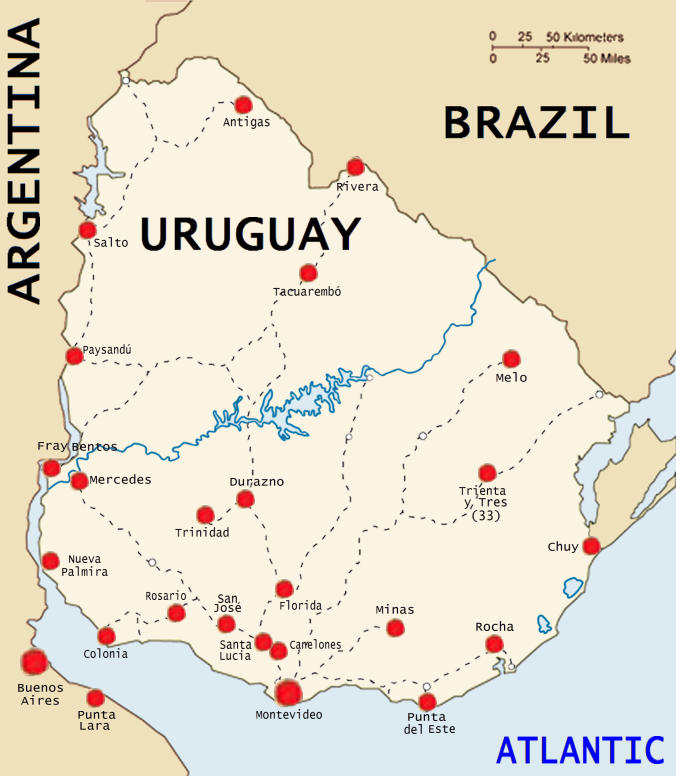 |
1927 Lithographed by the National Press, Montevideo, on white wove paper. Perf. 10¾.
 |
 |
 |
 |
| Type 1 5c (H1) |
Type 1 10c (H2) |
Type 1 20c (H3) |
Type 1 50c (H4) |
| Hisc. |
Type. |
Description |
Mint |
Used |
| H1 |
1 |
5c yellow |
8.00 |
8.00 |
| H2 |
1 |
10c deep blue |
10.00 |
10.00 |
| *H2a |
1 |
very deep blue |
15.00 |
15.00 |
| H3 |
1 |
20c blue-green |
12.00 |
12.00 |
| H4 |
1 |
50c vermilion |
18.00 |
18.00 |
*I have added this due to a reference to TE 2a in the
Ciardi Catalogue.
I have priced used the same as mint, as Hiscocks did, however my Yvert et Tellier catalogue prices
the 5c and 10c the same as mint,
the 50c about half and leaves the 20c un-priced. I do not have any used examples.
These were used as a surcharge for incomplete addresses.
In use, these had to be presented with the Duplicate 'heel' still attached.
Used ones have no heel and are cancelled with the Telegraph Company date-stamp.
Watermark.
Hiscocks described these as not having a watermark, but the four stamps of my set all show signs of one.
It is not easy to see what it is, but looks like "TELEGRAFOS / ~ ~ DEL ~ ~ / URUGUAY/REPUBLIC" is included, sideways in 4+ lines repeated throughout the sheet.
This looks like the watermark that the Scott catalogue calls Wmk. 188 "REPUBLICA / O. DEL / URUGUAY"
 | ~ DEL ~ | |
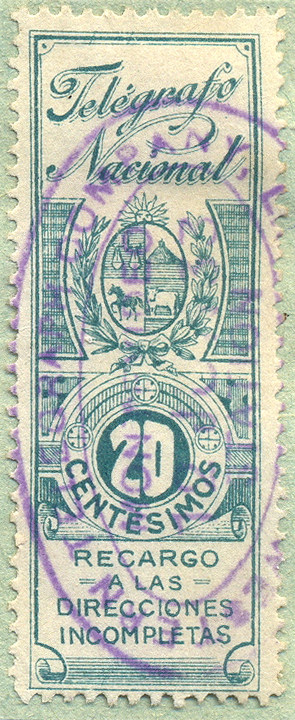
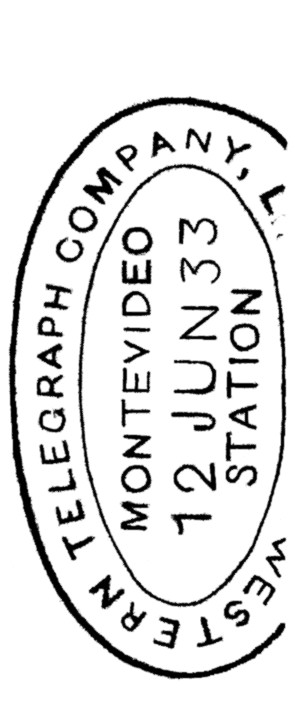
A 20c used by the Western Telegraph Company
(division of Cable & Wireless). in Montevideo in 1933. |
 | DEL / URUGUAY |
 | DEL / = O = |
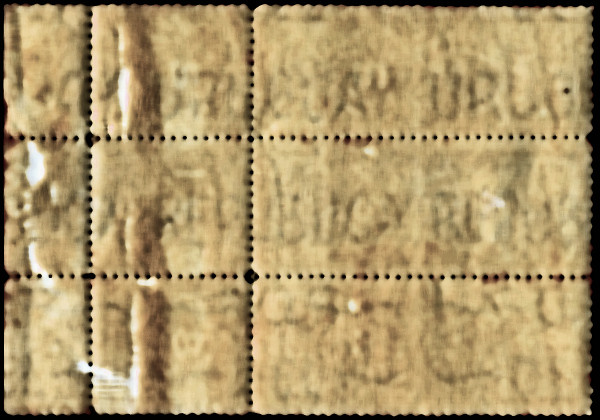 | URUGUAY |
| REPUBLIC |
| ??? |
The last image on the left and the 20c used are courtesy of Rolf Lamprecht.
Stationery.
TELÉGRAFO ORIENTAL
Form. No. 2 used at Montevideo in 1915.
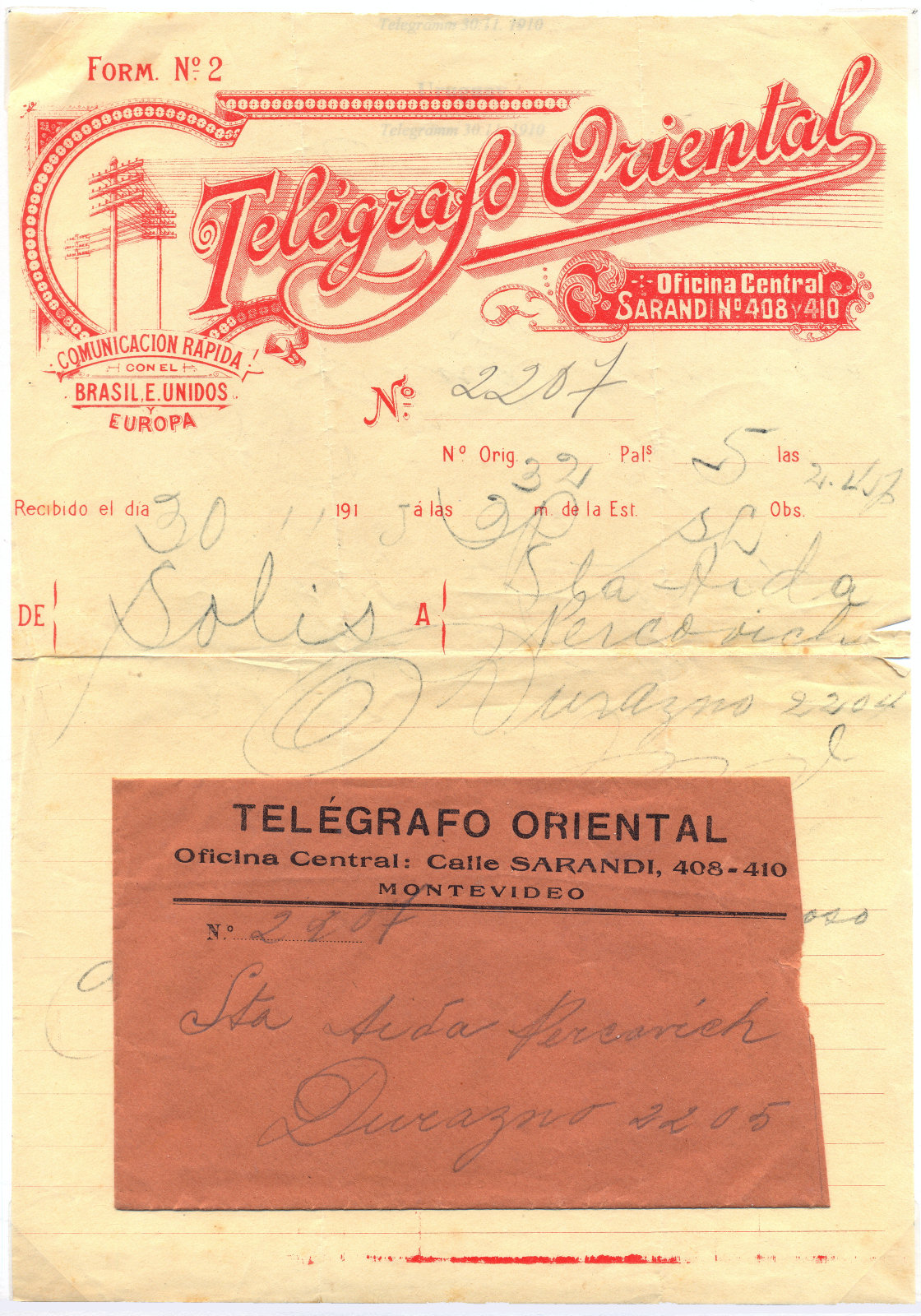
The delivery envelope is also shown. Images from RL.
TELÉGRAFO NACIONAL
National Telegraph "T. Fórm. nüm. 2" of 26 April 1913.
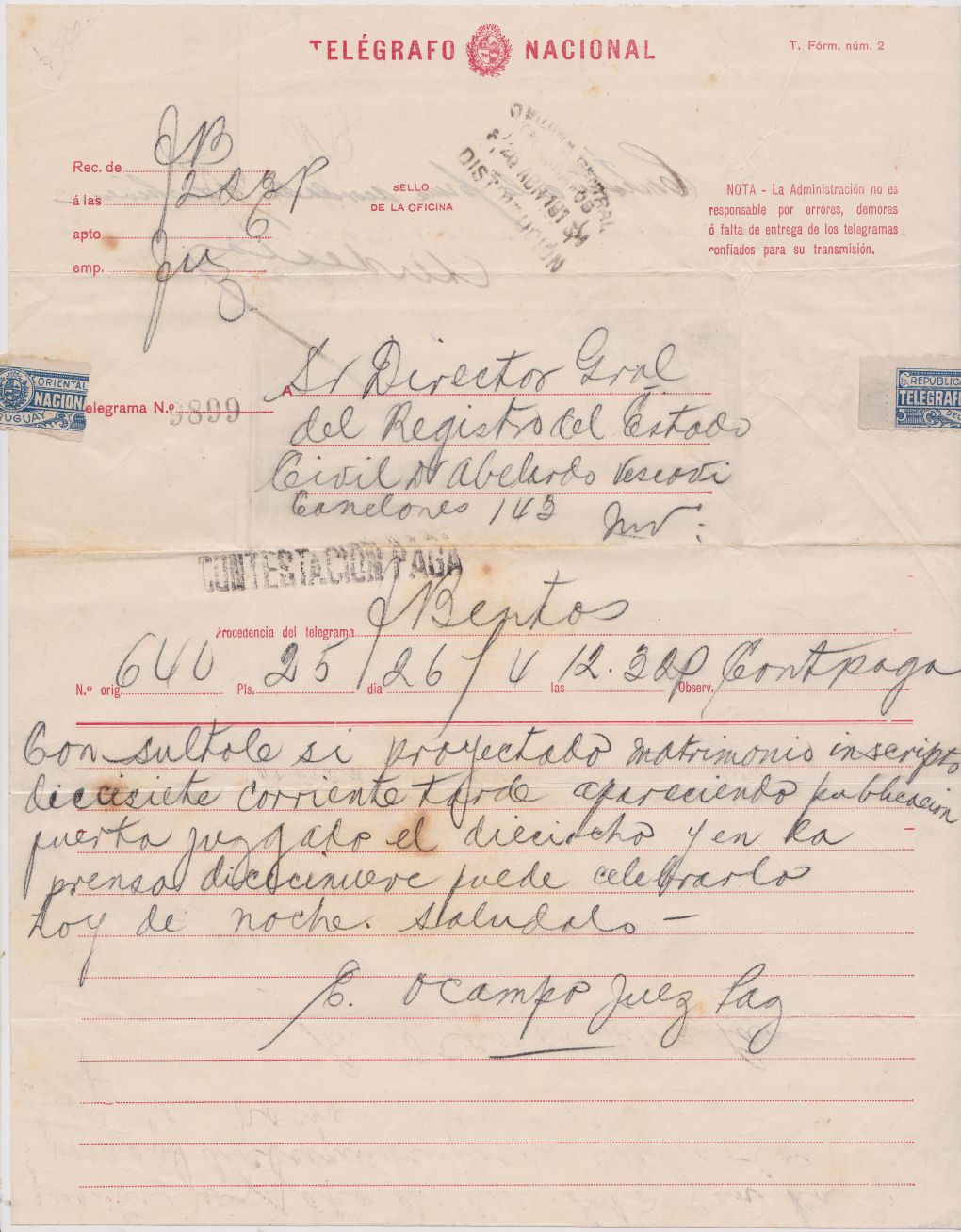
National Telegraph "T. Fórm. nüm. 2 T 1.000.000 / 31-1-931" of 21 May 1931.
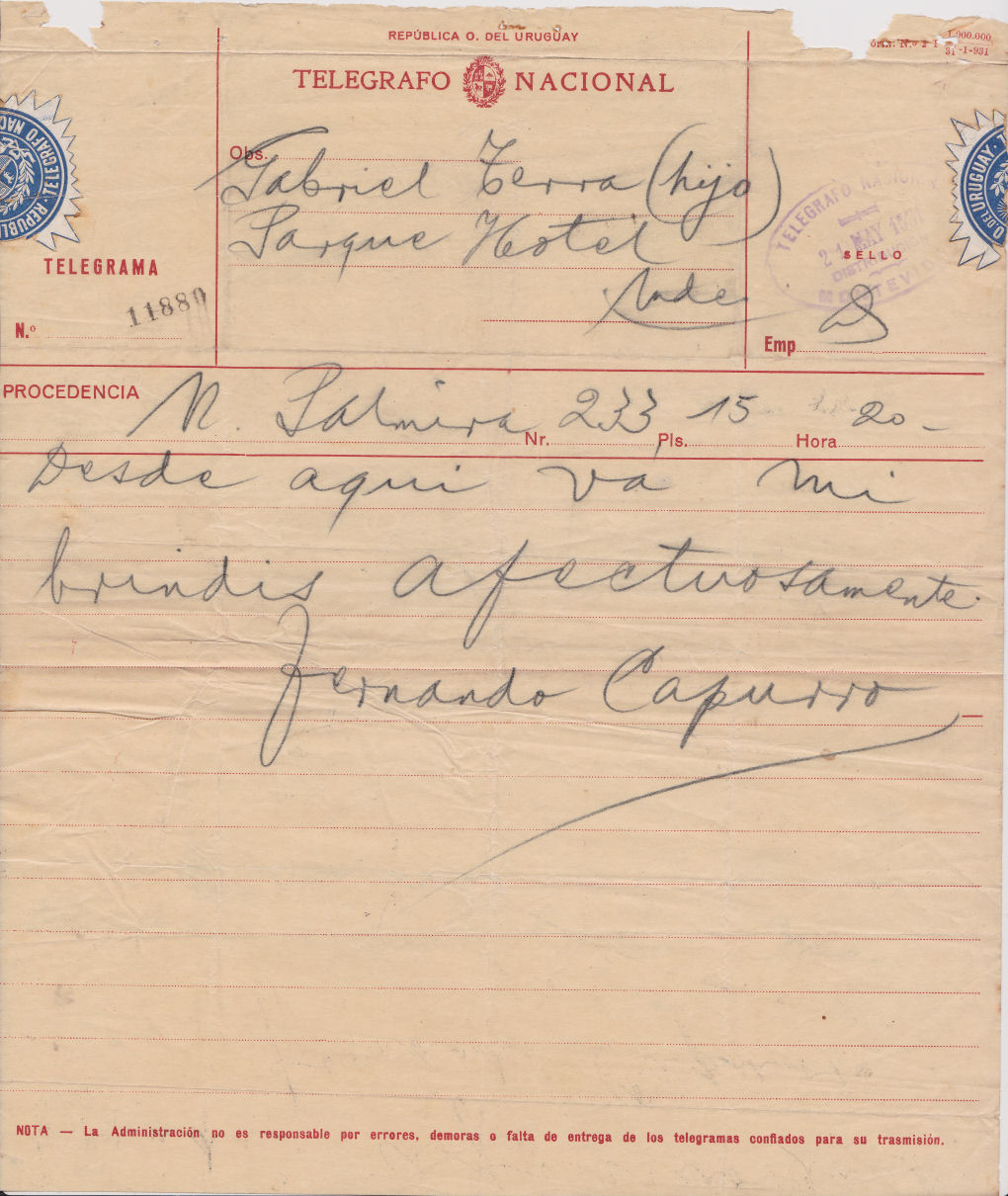
I have 3 examples, one has no legible year on it the other is dated 22 May 1931. That is number 12123, suggesting about 240 used per day.
I take the form number to imply that a million of these forms were printed on 31 January 1931. That would give an average of 106 per day.
National Telegraph - different style dated 18 January 1947.
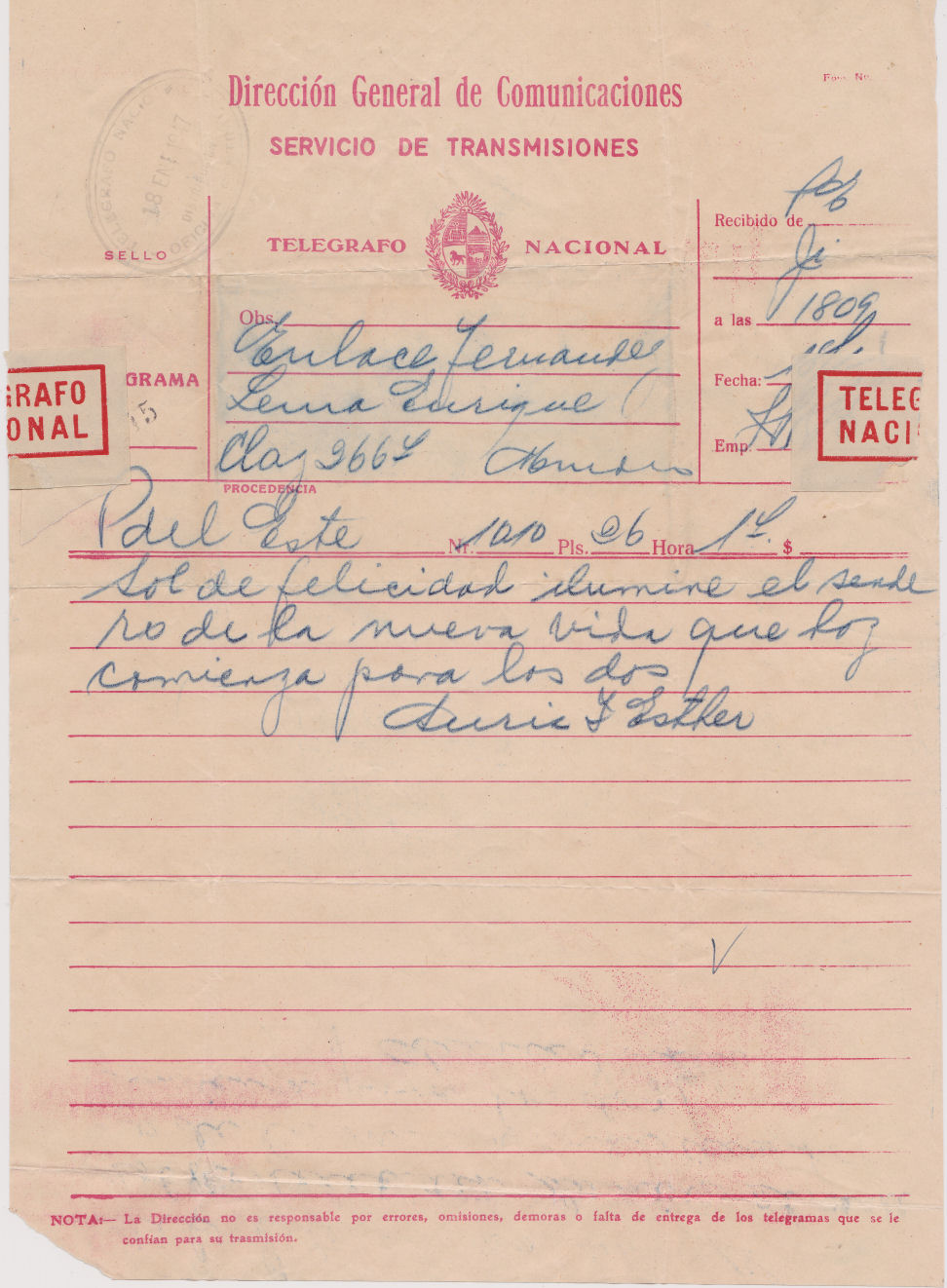
This is apparently for a wedding.
National Telegraph - Special Form "No. 6 T.", again dated 18 January 1947.
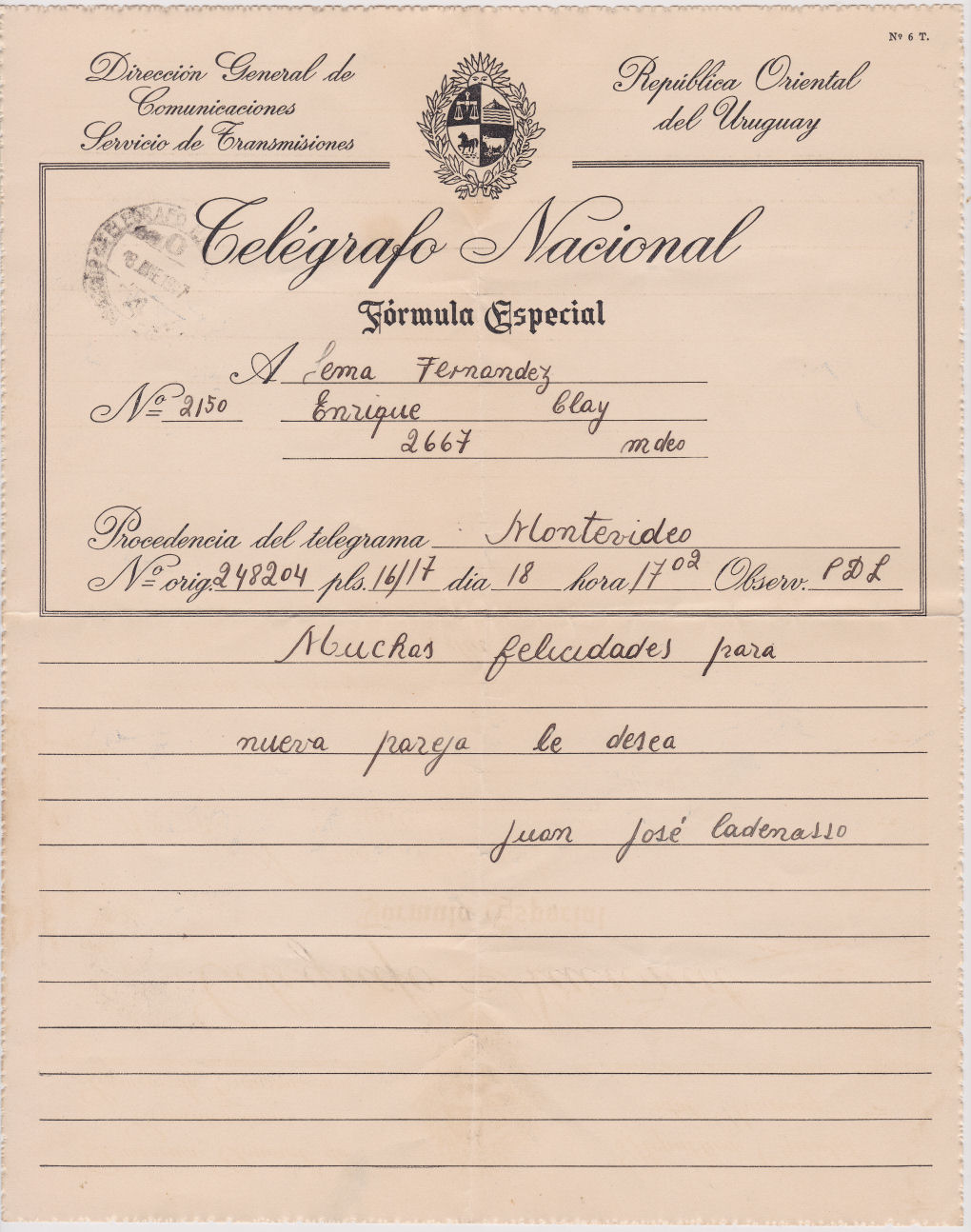
This is for the same event as the one above.
The envelope used for the telegram above.
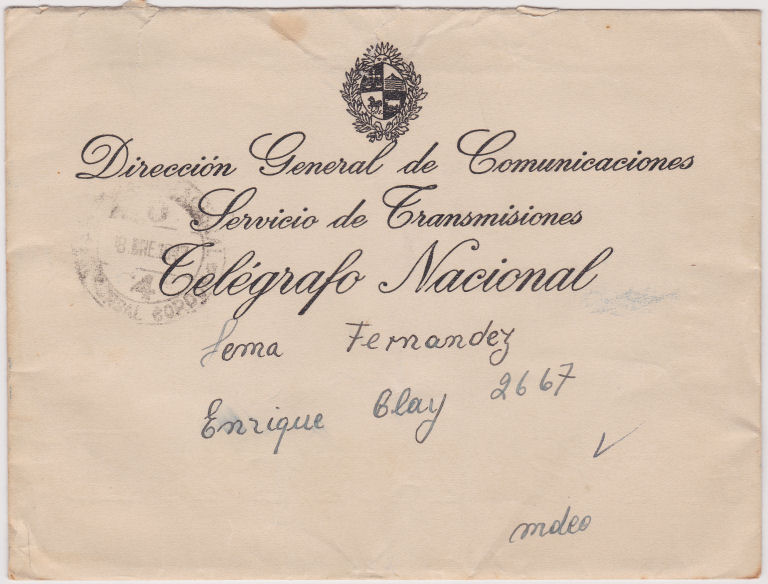
COMPAÑÍA TELEGRÁFO - TELEFÓNICA DEL PLATA
"TT" del Plata telegram of 8 April 1931. Form number at bottom-left reads "No. 1 V. B. / 25.000-12-30" which probably indicates 25,000 printed in December 1930.
It advertises international connections to Brazil, Europe, North America etc.
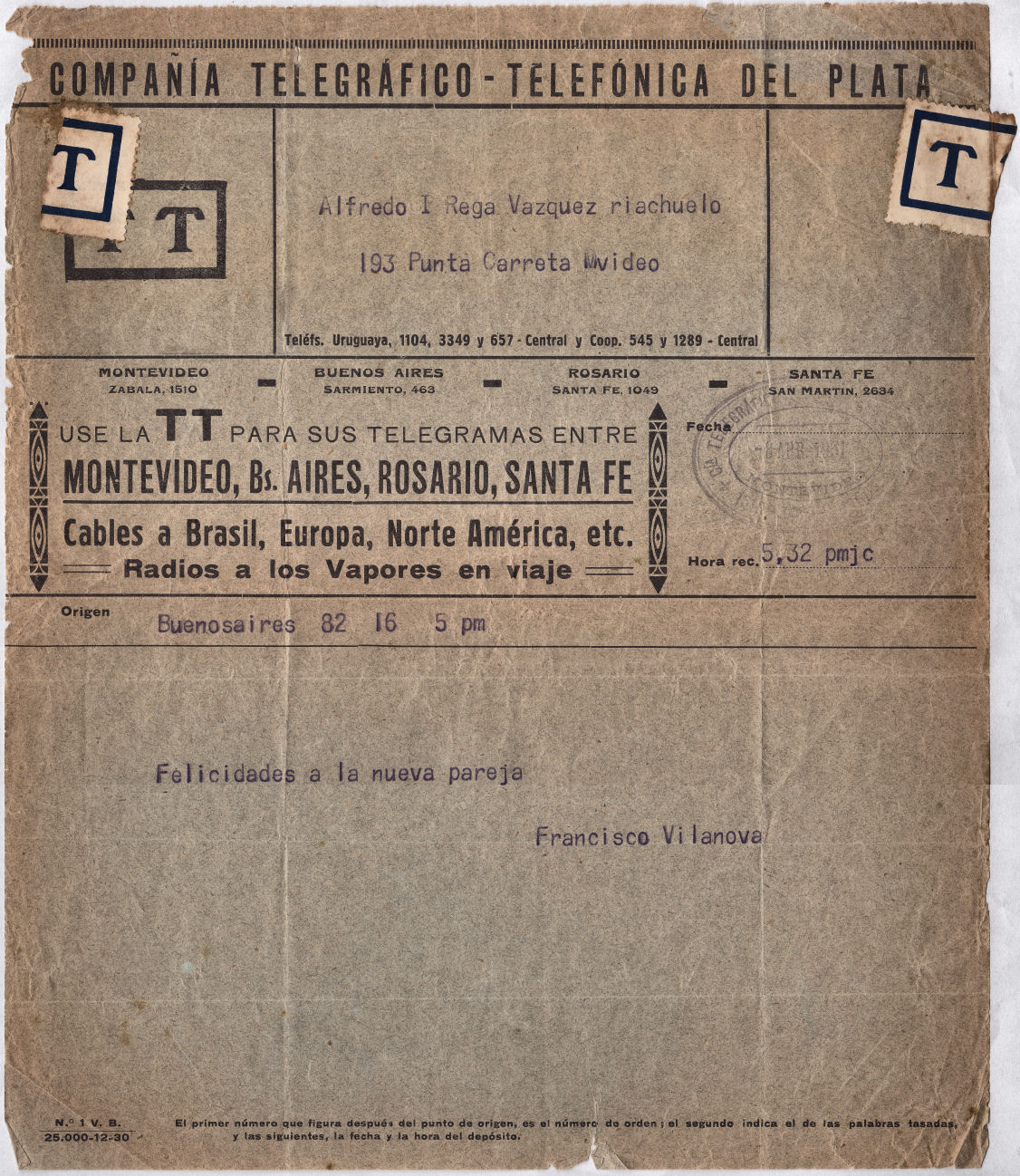
Used in Montevideo, but clearly operating in Buenos Aires, Rosario and Santa Fe of Argentina as well.
At some point in time, the River Plate company was taken over by the Western Telegraph Company which had already taken over the Western & Brazilian Telegraph Co.
The telegram below predates the one above.
Re-branded as "The River Plate Telegraph Co, Ltd.", this was used 29 July 1924, with Head Office in Buenos Aires.
at 333 and 337 San Martin street.
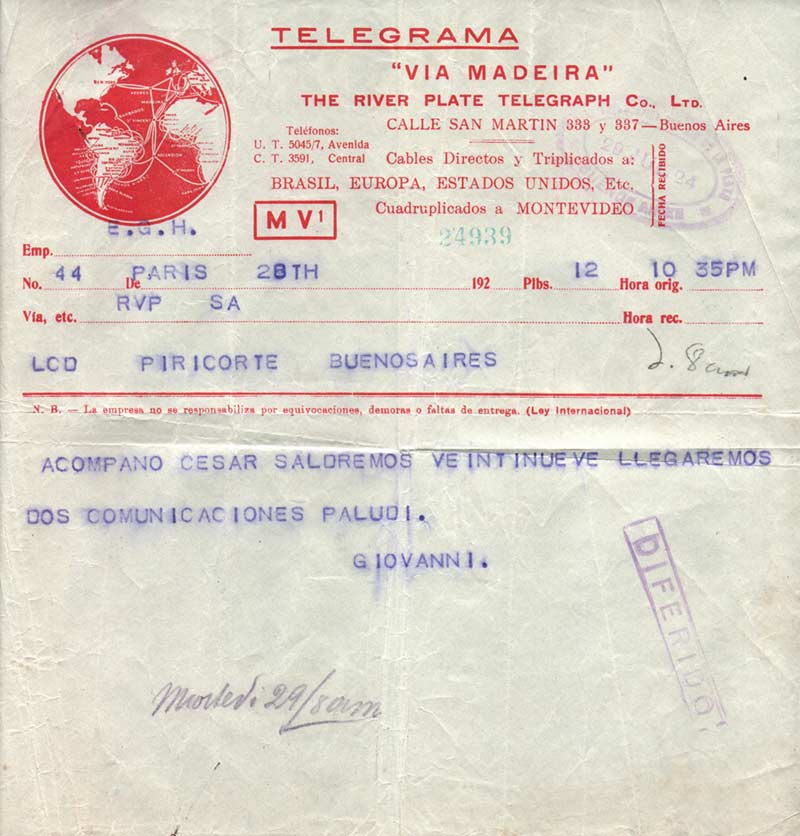
By May 1928, very similar forms were being used by
the Western Telegraph Co., at 335 San Martin street Buenos Aires. See under Argentina for those.
Image courtesy of Bill Glover at Atlantic-Cable.com.
Telegram Seals.
A range of different seals were used on telegrams in Uruguay.
This half sized image shows a sample of them.
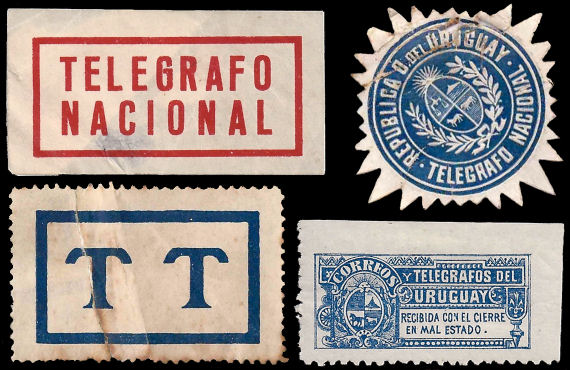
Steve Hiscocks made a start on cataloguing seals of the world in a book he published in 2007.
It was his hope to update it later, but unfortunately that was not to be.
His original book can be viewed at
Telegraph Seals: A World Catalogue. There are links from the pages to my updates.
Alternatively you can view the latest page for Uruguay.
